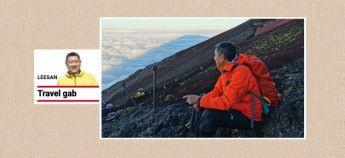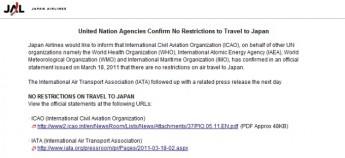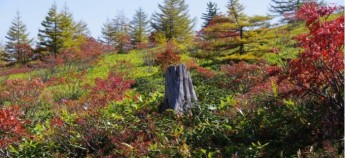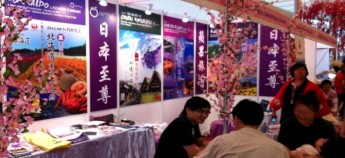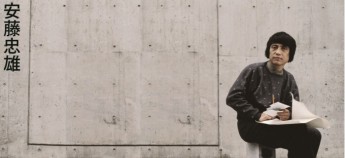Hot springs, traditional houses, snow here, there and everywhere – Gifu in Japan is a lot of fun.
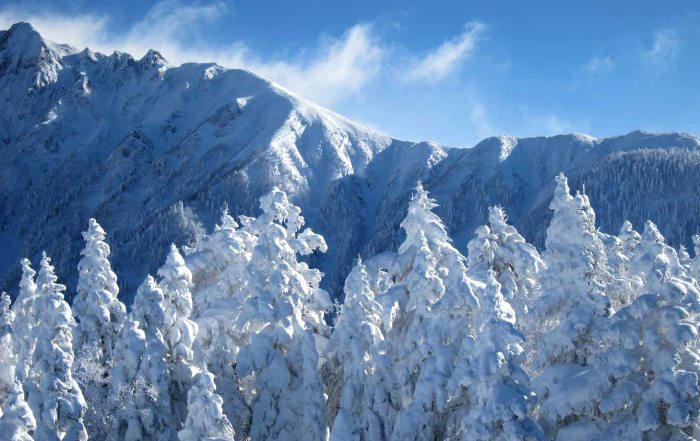
Activities in Alpine Japan.
Activities in Alpine Japan
By NG SI HOOI
SURE, it’s become something of a cliche, but when in Rome, one must do as the Romans do.
And so, despite my discomfort over baring my less-than-perfect body, I decided to experience the natural outdoor bath at Hodakaso Sanganoyu Hot Spring Resort in Takayama City, Gifu, Japan in the buff.
One should not, after all, miss the onsen (hot springs) experience in the Land of the Rising Sun.
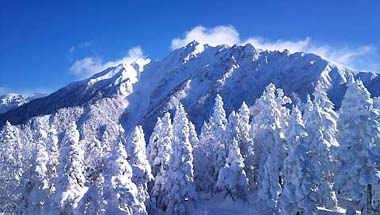
Awe-inspiring: An astonishing scenic view of the Northern Japanese Alps from the observation deck, which stands at 2156m.
Still, I had to brave myself to go to the women’s only outdoor bath on my first day in Japan. There was a group of obasan (old women) in the changing room who moved about in their birthday suit as if it was the most natural thing to do in the world.

Most resorts here provide hot springs bath.
It was snowing that day and the weather was extremely cold; nonetheless, I had to enter the bath very, very slowly as the water was hot. The scenery was spectacular, though, as snow was falling and melting in the bath as I was soaked in the water, embracing Mother Nature, feeling warm and relaxed. Hot springs are said to work wonders on the skin.
Most resorts here provide hot springs bath, but if you have the time, you should go to Okuhida Hot Springs Village in central Takayama, which comprises five onsen villages – Hirayu Onsen, Fukuji Onsen, Shinhirayu Onsen, Tochio Oncen and Shinhotaka Onsen.
After experiencing the hot springs, I joined the representatives of Gifu Prefectural Government and Apple Vacations & Conventions Sdn Bhd for Kaiseki, for a multi-course Japansese dinner at the resort. The must-try dishes in Gifu is the succulent Hida beef, which some say is even better than Kobe beef.
Those who don’t eat beef have a variety of other food to choose from. Tourists should not miss out on hobamiso (soy bean paste), a famous dish in northern Gifu. The food is grilled with fresh ingredients over magnolia leaves. Of course, there is always the ever-popular Japanese food such as sushi, shasimi and tempura.
The gassho-style house has a steeply angled roof, which resembles a pair of hands raised in prayer so it is called gassho (to pray).
If you want a memento as a remembrance of the dishes you have tried, then you should visit the food samples workshop in Gujo-Hachiman, where they make replicas of dishes with wax. Their wax sushi and tempura look like the real thing here. I had a chance to make a fruit tart at Sample Kobo Food Replica Store and Workshop operated by Sanpuru Konbo in Gujo-Hachiman. It cost me ¥850 (about RM30) and the whole process took less than 15 minutes. It was very easy, and kids especially enjoyed the whole process.
Konbo explained that his products were sold in all parts of Japan as it was very common for restaurant operators to display them.
“However, the food replicas are not cheap. Each one costs 10 to 15 times more than the actual dish,” Konbo revealed.
The food replica technique was commercialised by Takizo Iwasaki of Gujo-Hachiman in 1932. Today, you can find several food replica stores and workshops in this castle town.
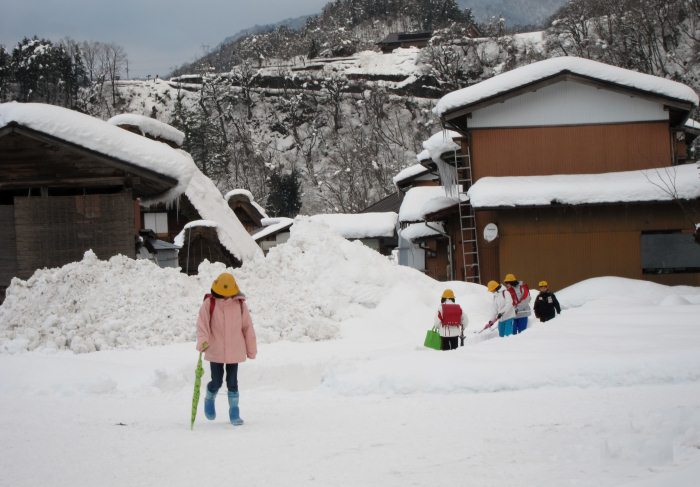
Winter in Gifu.
I also had a chance to explore the old parts of Gujo-Hachiman and to soak up the unique traditional atmosphere. It was snowing then, so the streets of the mostly residential area were nearly empty because the weather was too cold to be outdoors. However, the beauty of the castle town kept me outside.
The streets were lined with traditional wooden houses. There were several stalls selling light snacks along the streets so I decided to try out mitarashi dango (grilled rice dumplings coated in a soy-based sauce) and zen zai (red bean with mouchi rice) with a cup of Japanese green tea to keep warm.
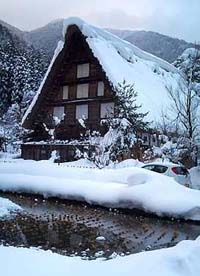
The gassho-style house has a steeply angled roof, which resembles a pair of hands raised in prayer so it is called gassho (to pray).
This hamlet of gassho-style houses is known for its architectural style of steeply angled roof resembling a pair of hands raised in prayer, and hence the name gassho (to pray). The village receives heavy snow between December and March, usually between 2m and 3m of snow.
To me, the village looked like a secret Santa village in the North Pole.

Wada House.
If you take the Shinhotaka Ropeway in northern Gifu, the largest ropeway in Asia, you can treat yourself to an astonishing 360° scenic view of the northern Japanese alps from the observation deck, which stands at 2,156m.
When I was there, a worker went around the observation deck holding a sign cautioning visitors that it was -11°C. You can also walk between the 2m snow walls at the snow track. I could not cover the entire snow track as the weather was just too cold. But it was fun and memorable to see so much snow.
Before taking the ropeway back, you may want to send a postcard to your loved ones by depositing it at the mailbox located here at the highest spot in Japan.
The winter trip is not complete if you do not try out winter sports, so I visited Wasshigatake Ski Resort in Gujo, which provides courses for experts as well as beginners.
If you don’t ski, you can still enjoy the snow by riding on a banana boat. Yep, they are not just for the sea. I had fun sledding.
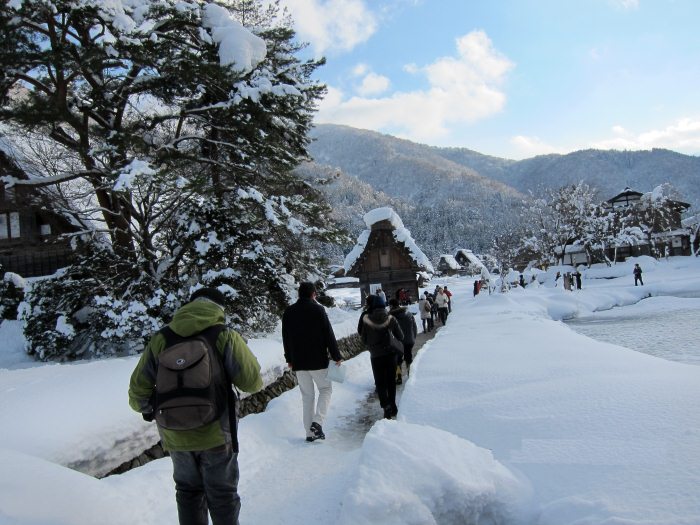
The winter trip to Gifu.
My last stop before leaving the central of Japan was the Jinya-mae morning market, which takes place every day in Sanmachi along the east bank of the Miya-gawa River, starting from 7am to noon. This is where you can get food and souvenirs for your friends and relatives. They sell Japanese snacks, local vegetables, fruits, pickles and locally made souvenirs.
The souvenir you may want to consider is Sarubobo doll (happy monkey baby), which is available only in Gifu. In the olden days, the doll was made by grandmothers and mothers for their little ones. They believed that it would bring happiness and good health to their babies.
I found Japan awesome and well worth more than just a visit.

Visitors can get food and souvenirs at the Jinya-mae morning market.
MAS flies to Tokyo 10 times weekly.
From Tokyo train station, take the Tokaido Shinkansen train to Nagoya, then change to the Tokaido Line to Gifu.
全球超过80000家酒店,Apple101助您轻松订房,出行无忧,绝对优惠价。入住期间付款,多数客房可免费取消!

